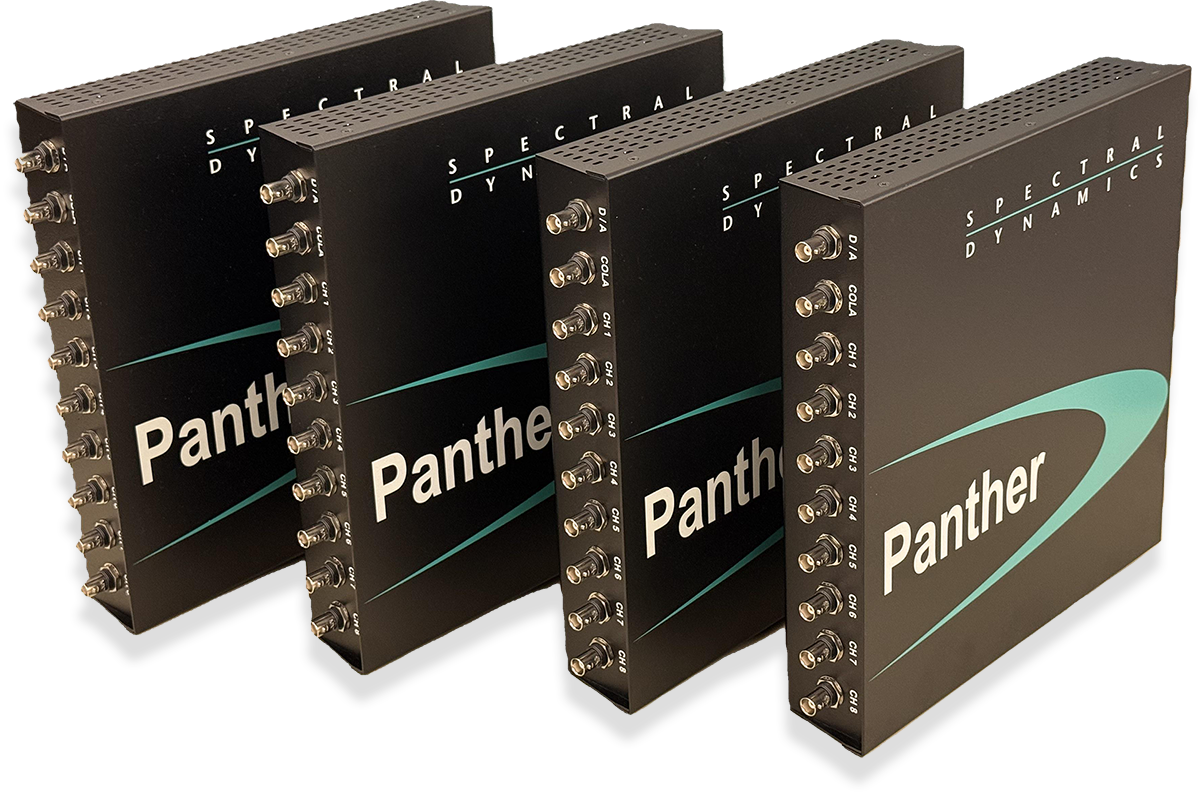Panther Comparison with Other Systems
| Feature | Spectral Dynamics Panther | General Competitors | ||
|
Ease of Use and Interface
|
Modern, intuitive UI designed for full touch-screen operation on Windows devices, including Microsoft Surface. The advanced Library capability allows instant access to test setups and data files with aliasing and favorites for rapid recall. Simplified setup and streamlined workflows reduce training and preparation time. |
Most competitor UIs are dated or overly complex. Few offer true touch-screen support or integrated libraries for setup and data management, requiring multiple steps and manual navigation. |
||
|
Safety and System Protection
|
Panther continuously monitors more than a dozen safety parameters up to 25 times per second. Intelligent abort logic and adaptive safeguards protect both test article and equipment during every test. Safety functions are integral to the control loop and always active. |
Competitors typically rely on basic safety limits or manual aborts. Their safety features are reactive, not predictive, offering less comprehensive protection for operators and test systems.
|
||
| Control approach | Uses patented, advanced digital filters and optimization methods tailored for each test type. Adaptive control updates the system model in real-time during the test. | Utilize adaptive control schemes that may be more generalized or less computationally intensive. Some may focus on specific types of disturbances. | ||
| Computational power | The system uses immense computational power from powerful processors to perform multi-dimensional optimization, even with numerous input and control channels. | Lower-cost or less advanced systems may have less computational power, potentially leading to slower control response, especially in complex or non-linear scenarios. | ||
| Control speed and stability | Provides rapid equalization and stable control in the face of non-linear responses, protecting the test article and equipment. Minimizes the time to reach full test levels. | Speed and stability can vary depending on the specific system and its computational abilities. Less advanced systems may struggle to maintain stability with rapidly changing non-linearities. | ||
| Test types | Optimized adaptive control methods for a wide range of test types, including sine, random, shock, and combined modes like sine-on-random. | Most modern controllers offer a variety of test types, but the quality of the adaptive control for specific modes may vary. | ||
| Multi-axis control (MIMO) | In advanced multi-exciter systems like the Jaguar (which also uses Spectral Dynamics' adaptive technology), it controls not only magnitude but also phase relationships between shakers, ensuring safe and accurate multi-axis control. | MIMO control in competitor systems also controls multiple shakers, but the effectiveness of adaptive control in managing phase relationships and complex non-linearities varies. | ||
| Handling of non-linearities | The adaptive algorithm and real-time model updates allow the Panther to quickly and accurately compensate for complex non-linear structural problems. | Systems with less sophisticated algorithms may be slower or less accurate in correcting non-linear responses, potentially requiring more manual intervention. |
Summary
 While most advanced vibration controllers employ some form of adaptive control, the Spectral Dynamics Panther differentiates itself through its:
While most advanced vibration controllers employ some form of adaptive control, the Spectral Dynamics Panther differentiates itself through its:
Patented algorithms: Specialized, patented methods are designed for superior performance across various test types.
Computational power: A robust, powerful architecture allows for rapid, multi-dimensional optimization that keeps up with complex changes.
Real-time model updating: The system updates its control model on the fly to respond to non-linearities and time-varying dynamics, ensuring superior test accuracy and safety.
Forward-looking technology: Anticipating the next control error allows for faster and more stable control, crucial for demanding test conditions.

